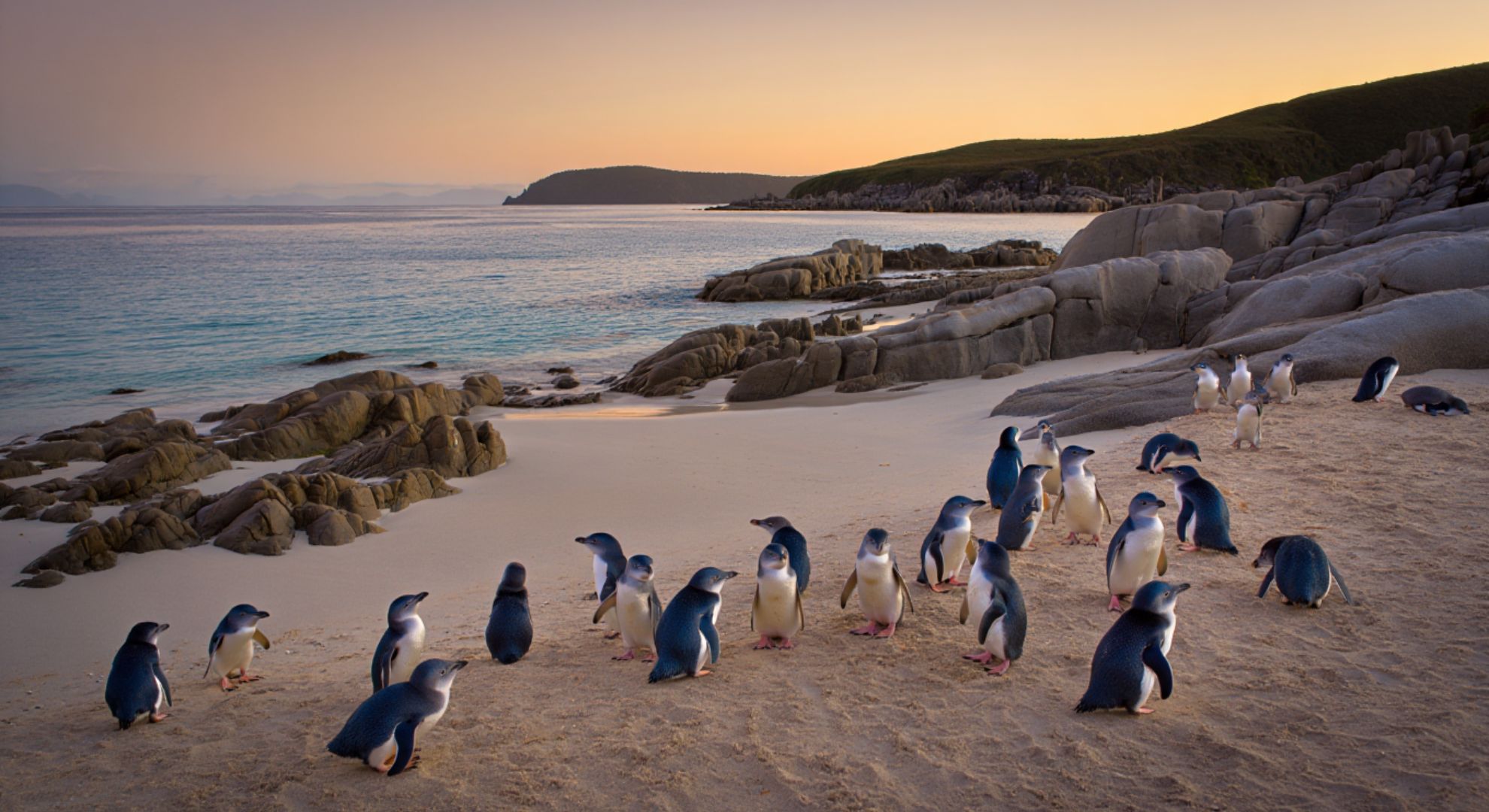They come ashore in a scatter of moonlight and spray, feet pattering on cold sand. The birds are small, cobalt-bright at sea, dusty slate on land, and entirely committed to a cycle older than the road that ends before this bay. Each year, the ritual repeats: burrows checked, mates re-met, eggs laid under a quilt of tussock and roots.
A clock set by the sea
Their timing is tuned to tides and stars, not calendars. In late winter, pairs reunite with a chorus of trills and brays, a sound both comical and ceremonial. They shuffle pebbles into doorways, preen salt from feathers, and line their nests with grass stolen from the dunes.
Chicks arrive in spring, soft as ash and hungry as fire, doubling their weight while parents commute to offshore currents. Out there the menu is anchovy, krill, and tiny squid, hunted in silver eddies miles offshore.
The hush of night arrivals
Dusk is their cover and their comfort, the hour when shapes detach from waves and wobble up the beach like windblown leaves. If you wait quietly, you hear the first whistle, then the scrape of claws on sand, and finally the reedy duet of a homecoming pair.
“Stay low, stay quiet, let the dark do the talking,” one local ranger murmurs. Another volunteer laughs softly: “They’re small, but the drama is huge—every step inland is a story.”
Home hazards
The cozy burrow is a fortress with many breaches. Stoats, rats, and stray cats hunt by scent, and off-leash dogs can wipe out a season in a single night. Storms gouge the dunes, and unseasonal heat can push chicks past their narrow limits.
At sea, warming water shifts the buffet line, forcing longer trips and leaner returns. When food is scarce, parents triage their effort, one staying out longer while the other guards the burrow and begs for luck.
Where they nest, how they fare
Below is a snapshot of three typical colony settings, each with trade-offs and tells.
| Aspect | Remote South Island shore | Town-edge colony | Predator-free sanctuary |
|---|---|---|---|
| Access | Hard track; few visitors | Easy access; more crowds | Restricted; guided visits |
| Predators | Low human pressure; wild predators present | Higher dog/cat pressure | Intensive control; near-zero predation |
| Food distance | Variable; rich nearby waters | Similar, but boat traffic higher | Often good; monitored waters |
| Disturbance | Minimal light/noise pollution | Streetlights and vehicle noise | Controlled lighting; timed entries |
| Monitoring | Periodic community surveys | Citizen science and council checks | Tagging, burrow cams, full datasets |
| Breeding success | Medium; weather and predator dependent | Variable; dogs and traffic can spike losses | High; fledging rates often strong |
People in the story
The birds need us most when we think they don’t, when an idle torch beam becomes a beacon for predators or a flash photo freezes a parent mid-stride. Being present without being loud is the quietest kind of help.
If you ever visit at dusk:
- Keep dogs leashed, lights dimmed, distance generous, and voices low.
Science in the sand
Biologists read the shoreline like script, counting tracks, weighing chicks, and logging burrow temperatures to catch the subtle drift of a warming climate. Passive tags note who returns and when, teasing out which partnerships persist and which fracture under stress.
Molting season is the hardest pause, when parents become landlocked, starving onshore for two or three weeks while they grow a waterproof suit. Good years see chicks fledge plump and curious; tough years send them to sea light and vulnerable.
“Data is our compass, but humility is our map,” a researcher tells me, brushing sand from a notebook. “The ocean edits our predictions every single day.”
Why it matters
These birds are the heartbeat of a coastline that still makes room for wildness, a reminder that the smallest bodies can carry whole seasons on their backs. Protect the corridor between surf and burrow, and you protect a ribbon of time that binds sea to land and people to place.
On a wind-chilled evening the tide breathes out, and twenty blue-backed comets land with the same shy certainty as last year. They vanish into the dunes, into the past, into the next bright hatch the ocean can spare. And the beach, scrubbed clean by the swell, keeps their secret until the stars light the way again.
